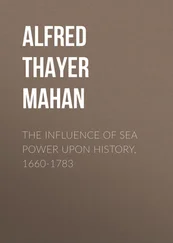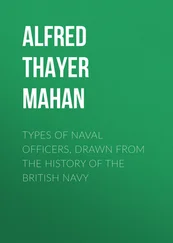Alfred Thayer Mahan - Sea Power in its Relations to the War of 1812. Volume 2
Здесь есть возможность читать онлайн «Alfred Thayer Mahan - Sea Power in its Relations to the War of 1812. Volume 2» — ознакомительный отрывок электронной книги совершенно бесплатно, а после прочтения отрывка купить полную версию. В некоторых случаях можно слушать аудио, скачать через торрент в формате fb2 и присутствует краткое содержание. Жанр: foreign_prose, История, foreign_edu, foreign_antique, на английском языке. Описание произведения, (предисловие) а так же отзывы посетителей доступны на портале библиотеки ЛибКат.
- Название:Sea Power in its Relations to the War of 1812. Volume 2
- Автор:
- Жанр:
- Год:неизвестен
- ISBN:нет данных
- Рейтинг книги:5 / 5. Голосов: 1
-
Избранное:Добавить в избранное
- Отзывы:
-
Ваша оценка:
- 100
- 1
- 2
- 3
- 4
- 5
Sea Power in its Relations to the War of 1812. Volume 2: краткое содержание, описание и аннотация
Предлагаем к чтению аннотацию, описание, краткое содержание или предисловие (зависит от того, что написал сам автор книги «Sea Power in its Relations to the War of 1812. Volume 2»). Если вы не нашли необходимую информацию о книге — напишите в комментариях, мы постараемся отыскать её.
Sea Power in its Relations to the War of 1812. Volume 2 — читать онлайн ознакомительный отрывок
Ниже представлен текст книги, разбитый по страницам. Система сохранения места последней прочитанной страницы, позволяет с удобством читать онлайн бесплатно книгу «Sea Power in its Relations to the War of 1812. Volume 2», без необходимости каждый раз заново искать на чём Вы остановились. Поставьте закладку, и сможете в любой момент перейти на страницу, на которой закончили чтение.
Интервал:
Закладка:
Some days before the battle of the Thames the embarkation from Niagara for Sackett's Harbor took place under cover of the naval operations. After Yeo had gone into Amherst Bay on September 12, as already mentioned, 108 108 Ante, p. 60.
Chauncey remained cruising in the neighborhood till the 17th, when he went to Sackett's, the enemy having got into Kingston. On the 19th he sailed again for Niagara, to support the movement of the army. He arrived on the 24th, and found there a report of Perry's victory, which had been received on the 22d. On the 25th embarkation began, and Wilkinson hoped that the whole body, three thousand strong, would start on their coasting voyage along the south shore of the lake on the 27th; but after dark, to conceal the direction taken. At this juncture, on September 26, Chauncey heard that the British fleet was at York, which was confirmed by a lookout vessel despatched by him. As Yeo, unless checked, might molest the transportation of the troops, it became necessary first to seek him; but owing to a head wind the American squadron could not leave the river till the evening of the 27th.
As the schooner gun-vessels sailed badly, the "Pike," the "Madison," and the "Sylph" each took one in tow on the morning of the 28th, steering for York, where the British fleet was soon after sighted. As the Americans stood in, the British quitted the bay to gain the open lake; for their better manœuvring powers as a squadron would have scope clear of the land. They formed on the port tack, running south with the wind fresh at east (Positions 1). When about three miles distant, to windward, Chauncey put his fleet on the same tack as the enemy and edged down towards him (Positions 2). At ten minutes past noon, the Americans threatening to cut off the rearmost two of the British, Yeo tacked his column in succession, beginning with his own ship, the leader (a), heading north toward his endangered vessels, between them and the opponents. When round, he opened fire on the "General Pike." As this movement, if continued, would bring the leading and strongest British ships upon the weaker Americans astern, Chauncey put his helm up and steered for the "Wolfe" (b), as soon as the "General Pike" came abreast of her; the American column following in his wake. The "Wolfe" then kept away, and a sharp encounter followed between the two leaders, in which the rest of the squadrons took some share (Positions 3).
At the end of twenty minutes the "Wolfe" lost her main and mizzen topmasts, and main yard. With all her after sail gone, there was nothing to do but to keep before the wind, which was fair for the British posts at the head of the bay (Positions 4). The American squadron followed; but the "Madison," the next heaviest ship to the "Pike," superior in battery power to the "Wasp" and "Hornet" of the ocean navy, and substantially equal to the second British ship, the "Royal George," "having a heavy schooner in tow, prevented her commander from closing near enough to do any execution with her carronades." 109 109 Chauncey's report, Oct. 1, 1813, Niles' Register, vol. v. p. 134. The extract has been verified from the original in the Captains' Letters. The report of Sir James Yeo (British Records Office) agrees substantially with Chauncey's accounts of the movements, but adds that upon the fall of the "Wolfe's" topmasts the "Pike" immediately took a distance out of carronade range, whence her long 24's would tell. "I can assure you, Sir, that the great advantage the enemy have over us from their long 24-pounders almost precludes the possibility of success, unless we can force them to close action, which they have ever avoided with the most studied circumspection."
The explanation requires explanation, which is not forthcoming. Concern at such instants for heavy schooners in tow is not the spirit in which battles are won or campaigns decided; and it must be admitted that Commodore Chauncey's solicitude to keep his schooners up with his real fighting vessels, to conform, at critical moments, the action of ships of eight hundred and six hundred tons, like the "Pike" and "Madison," to those of lake craft of under one hundred, is not creditable to his military instincts. He threw out a signal, true, for the fleet to make all sail; but as he held on to the schooner he had in tow, neither the "Madison" nor "Sylph" dropped hers. His flagship, individually, appears to have been well fought; but anxiety to keep a squadron united needs to be tempered with discretion of a kind somewhat more eager than the quality commonly thus named, and which on occasion can drop a schooner, or other small craft, in order to get at the enemy. As the dismasted "Wolfe" ran to leeward, "the 'Royal George,'" says the American naval historian Cooper, "luffed up in noble style across her stern to cover the English commodore" (c), and "kept yawing athwart her stern, delivering her broadsides in a manner to extort exclamations of delight from the American fleet (Positions 5). She was commanded by Captain Mulcaster." Her fighting mate, the "Madison," had a heavy schooner in tow. This interposition of the "Royal George" was especially timely if, as Yeo states, Chauncey was holding at a distance whence his long twenty-fours told, while the "Wolfe's" carronades did not reach.
At quarter before three Chauncey relinquished pursuit. Both squadrons were then about six miles from the head of the lake, running towards it before a wind which had increased to a gale, with a heavy sea. Ahead of them was a lee shore, and for the Americans a hostile coast. "Though we might succeed in driving him on shore, the probability was we should go on shore also, he amongst his friends, we amongst our enemies; and after the gale abated, if he could get off one or two vessels out of the two fleets, it would give him as completely the command of the lake as if he had twenty vessels. Moreover, he was covered at his anchorage by part of his army and several small batteries thrown up for the purpose." For these reasons, the commodore "without hesitation relinquished the opportunity then presenting itself of acquiring individual reputation at the expense of my country." The British squadron anchored without driving ashore. The American returned to Niagara, having received a certain amount of damage aloft, and one of the purchased schooners having lost her foremast; but the killed and wounded by the enemy amounted to only five, all on board the "General Pike." That vessel lost also twenty-two men by the bursting of a gun.
CHAUNCEY AND YEO, SEPTEMBER 28, 1813
Chauncey had been in consultation with Armstrong at Sackett's, and understood perfectly the plans of the Government. On his return to Niagara he was requested by Wilkinson to keep watch over the hostile squadron in its present position under Burlington Heights, so as to cover the eastward movement of the troops, which began October 1. On the 2d the last transport had gone, and Wilkinson himself set out for Sackett's; bringing, as he reported, thirty-five hundred men. On the 3d the British fleet was seen well towards the west end of the lake; but on the 4th a vessel sent especially to reconnoitre came back with the report that it was no longer there. This proved to be a mistake; but, as it came from a careful and competent officer, Chauncey inferred that the enemy had given him the slip and gone to the eastward. He therefore ran down the lake, to cover the arrival of the troops as he had their departure. On the afternoon of the 5th, near Kingston, he captured six out of seven transports bound thither with re-enforcements. Of these, two were the schooners taken by Yeo in the engagement of August 10, which the British had not thought fit to add to their fleet, but used simply as carriers; mounting their guns on the fortifications of Kingston. Cooper justly remarks, "This sufficiently proves the equivocal advantage enjoyed by the possession of these craft." Chauncey himself, at the end of the campaign, recommended the building of "one vessel of the size of the 'Sylph,'"—three hundred and forty tons,—"in lieu of all the heavy schooners; for really they are of no manner of service, except to carry troops or use as gunboats." 110 110 Chauncey to Navy Department, Dec. 17, 1813. Captains' Letters.
The reflection is inevitable,—Why, then, had he allowed them so to hamper his movements? It is to be feared that the long ascendency of the gunboat policy in the councils of the Government had sapped the professional intelligence even of some naval officers.
Интервал:
Закладка:
Похожие книги на «Sea Power in its Relations to the War of 1812. Volume 2»
Представляем Вашему вниманию похожие книги на «Sea Power in its Relations to the War of 1812. Volume 2» списком для выбора. Мы отобрали схожую по названию и смыслу литературу в надежде предоставить читателям больше вариантов отыскать новые, интересные, ещё непрочитанные произведения.
Обсуждение, отзывы о книге «Sea Power in its Relations to the War of 1812. Volume 2» и просто собственные мнения читателей. Оставьте ваши комментарии, напишите, что Вы думаете о произведении, его смысле или главных героях. Укажите что конкретно понравилось, а что нет, и почему Вы так считаете.












